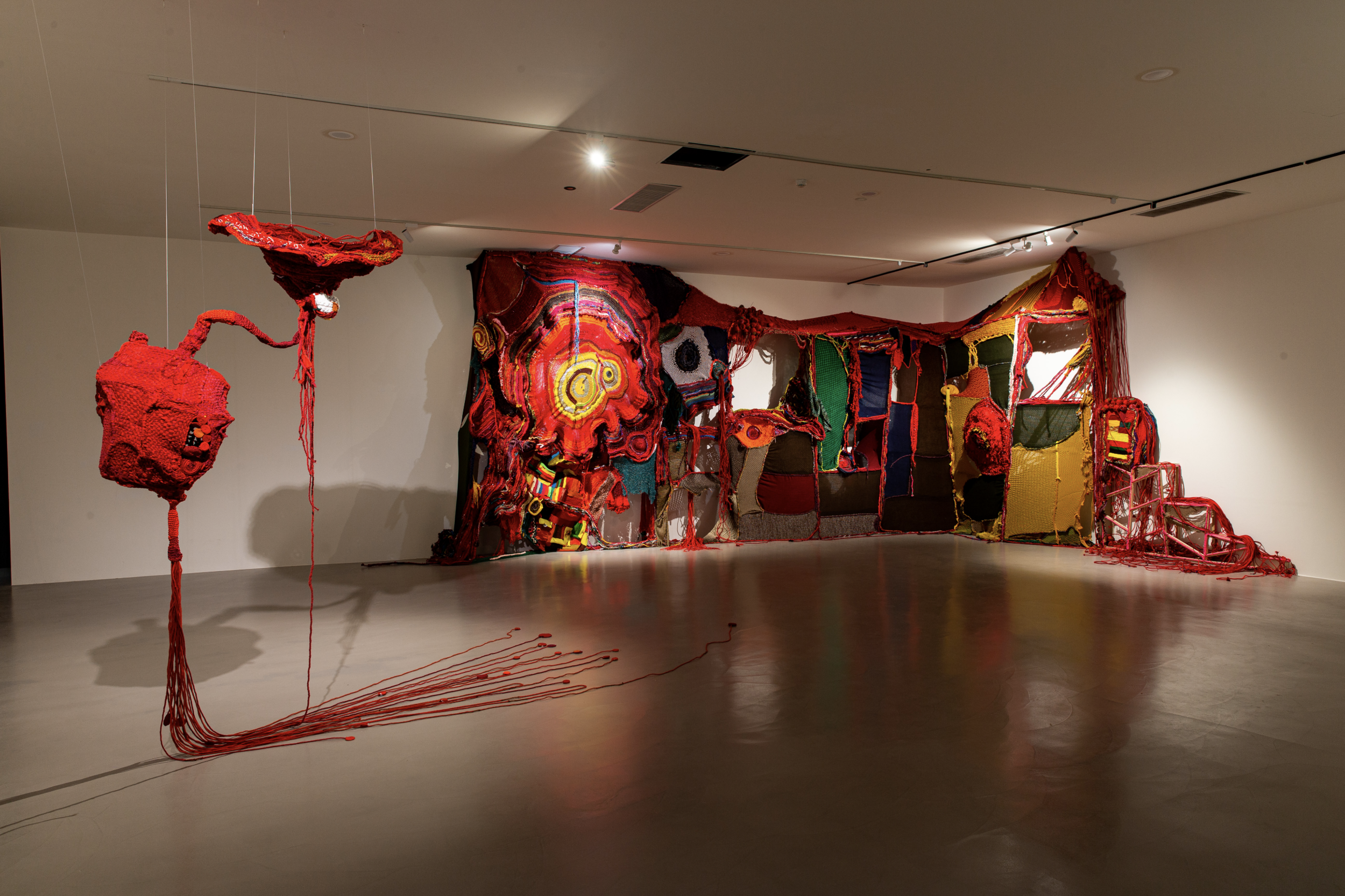You and I Don’t Live on the Same Planet — Taipei Biennial
The 2020 Taipei Biennial is a commentary on the 'increasing disagreement on how to keep the world inhabitable' as curators Bruno Latour and Martin Guinard explain. How to agree on a future, when the present diverges in political opinions and acceptance of geology and ecology?
The curators invite us to reflect on these questions whilst navigating a fictional planetarium in the form of an exhibition at the Taipei Fine Arts Museum.
You and I Don’t Live on the Same Planet – A Fictional Planetarium at Taipei Biennial curated by Bruno Latour, Martin Guinard and Eva Lin.
The first stop is Planet Globalisation, which explores the reality of a globalised world. From the indulgence of our society of abundance, the contamination of our oceans to armed conflicts, this planet underscores the shortfalls of our current system. An important part of this first planet is the work muzungu (those who go round and round in circles) by the artist Franck Leibovici and legal analyst Julien Seroussi, which reflects on an attack on Bogoro, a small village in the Democratic Republic of the Congo, by militia men. The interactive installation is composed of large panels with a range of evidence materials: photographs, hand-written text, maps. Viewers are invited to create narratives with these materials, taking on the role of international judges studying evidence.
Franck Leibovici & Julien Seroussi, muzungu (those who go round and round in circles), 2016. Courtesy of the Artist and Taipei Fine Arts Museum.
Chin Cheng-Te, Lee Chia-Hung, Lin Chuan-Kai, and Chen Yi-Chun, Making Friends/ Fire, 2020. Courtesy of the Artist and Taipei Fine Arts Museum.
The next stop is Planet Security – composed of three works focussing on the impact of a globalized world onto people who feel lost and betrayed by the system. Part of this planet is Chin Cheng-Te, Lee Chia-Hung, Lin Chuan-Kai, and Chen Yi-Chun's Making Friends/ Fire – an installation investigating the military and surveillance history of Taipei's Shilin and Beitou districts. The work is composed of three parts: the first one is a stele titled The Cold Plum Fort— A Cold War Monument in Taiwan, the second is composed of objects belonging to the Kuomintang (KMT) history, and the last one is a five-screen video installations presenting the people’s narrative, in opposition to the official one.
Moving forward is Planet Escape, exploring narratives of space colonisation and transhumanist ideas through the work Corrupted Air–Act VI by Femke Herregraven. The installation transports visitors into a survivalist bunker, which only three creatures inhabit: the avatars of the extinct elephant bird, a trilobite and a lizard. They engage in a discussion, waiting for the “Last Man” who never comes.
Femke Herregraven, Corrupted Air –Act VI, 2019. Courtesy of the Artist and Taipei Fine Arts Museum.
Aruwai Kaumakan, Vines in the Mountains, 2020. Courtesy of the Artist and Taipei Fine Arts Museum.
The next section is one the largest of the exhibition: Planet Terrestrial, which is composed of two parts – the Critical Zone and Gaia. The first focusses on the fragile space of the surface of the Earth, with works such as The Axis of Life by Aruwai Kaumakan. Made using a Paiwanese traditional technique called Lemikalik, where the weaving is done in circles, Kaumakan created a large sculptural environeent with cotton, wool copper, silk, and glass beads. The curators interpret the Kaumakan's work as a 'a statement about developing ways to dwell in a disturbed environment'.
The second part of Planet Terrestrial elaborates on the concept of Gaia – a self-regulating system which results from life activity. A highlight is the installation The School of Mutants, by Hamedine Kane, Stéphane Verlt-Bottéro and Nathalie Muchamad with Olivia Anani and Lou Mo. The work was inspired by the unfinished transnational project between Taiwan and West Africa in the 1990s and focuses on post-independence architecture in Africa, political utopias In Senegal and speculative futures. The installation was specifically made for the Biennial an is composed of 3-channel video, a sound piece and archive materials.
Hamedine Kane, Stéphane Verlet-Bottéro, and Nathalie Muchamad with Olivia Anani and Lou Mo, still image from The School of Mutants, 2020, wood, cotton, wax, pigment, paper, ink, sound, HD video, dimensions variable.
June Balthazard and Pierre Pauze, Mass, 2020. Courtesy of the Artist and Taipei Fine Arts Museum.
Finally, the last stop is the Planet with Alternative Gravity. As part of this subsection, June Balthazard and Pierre Pauze present their theatrical video installation Mass. Based on a conversation between two scientists Michel Mayor (2019 Nobel Prize in Physics) and Chiara Mariotti (Director of Research at CERN), the works introduces viewers to two different models of physics. Oscillating between reality and fiction, June Balthazard, prompts viewers, “to detach themselves from a form of realism”.
The Taipei Biennial opened on November 21st 2020 and runs through March 14th 2021
Words: Polina Chizhova







